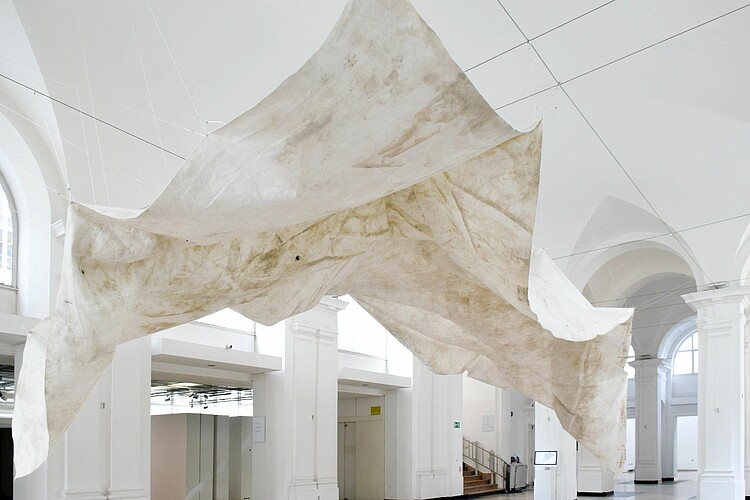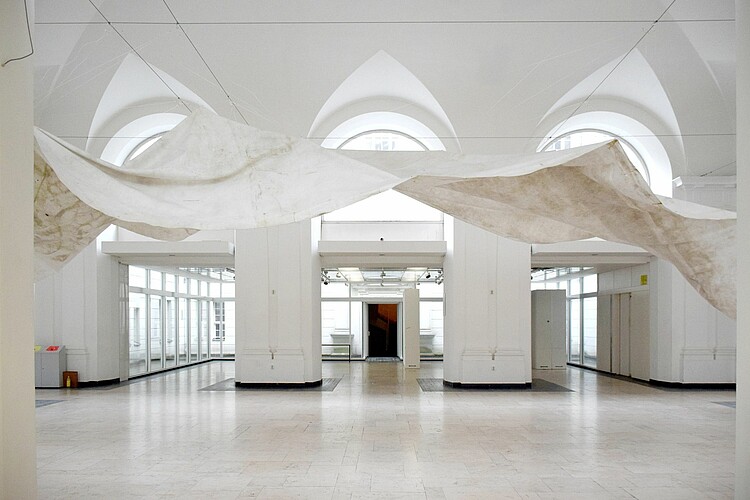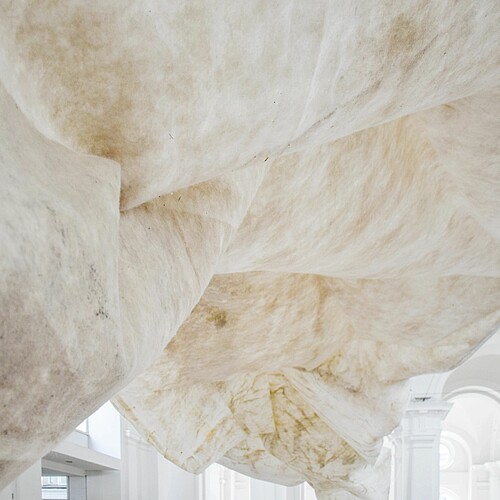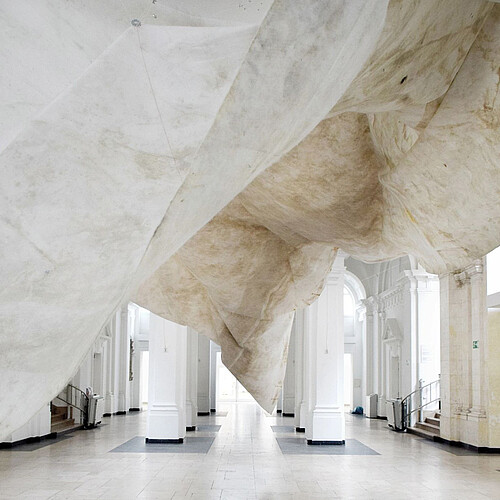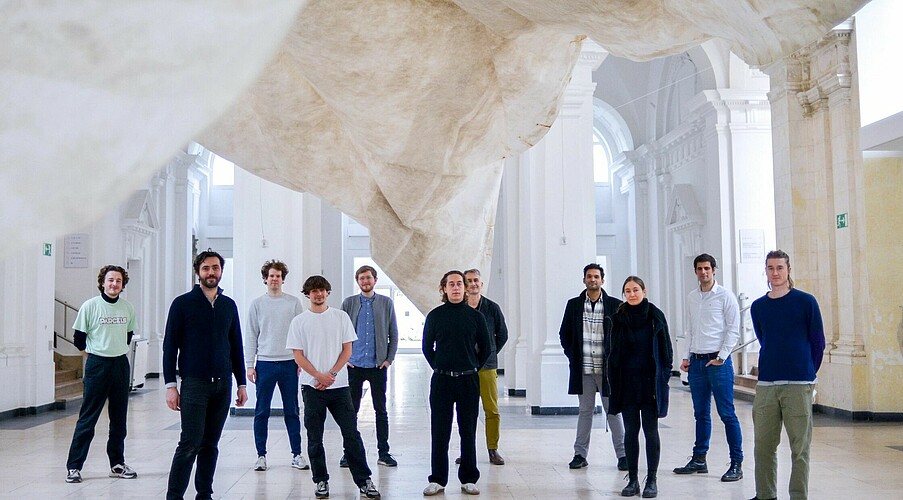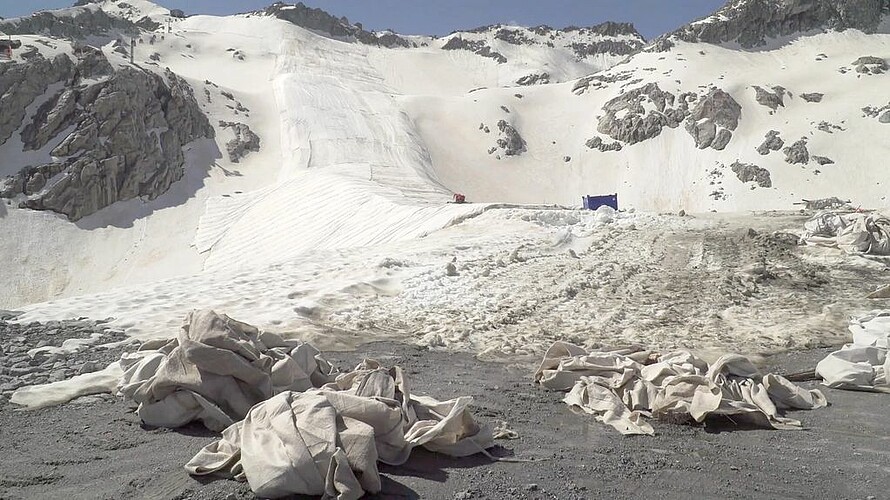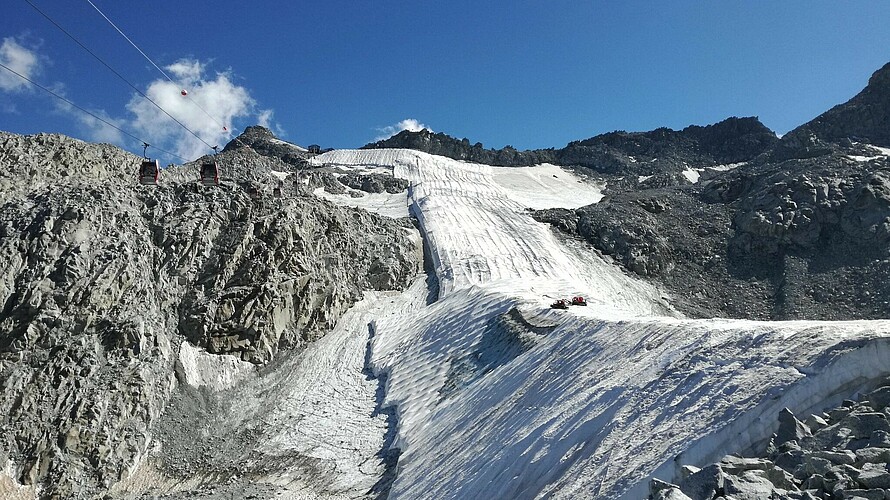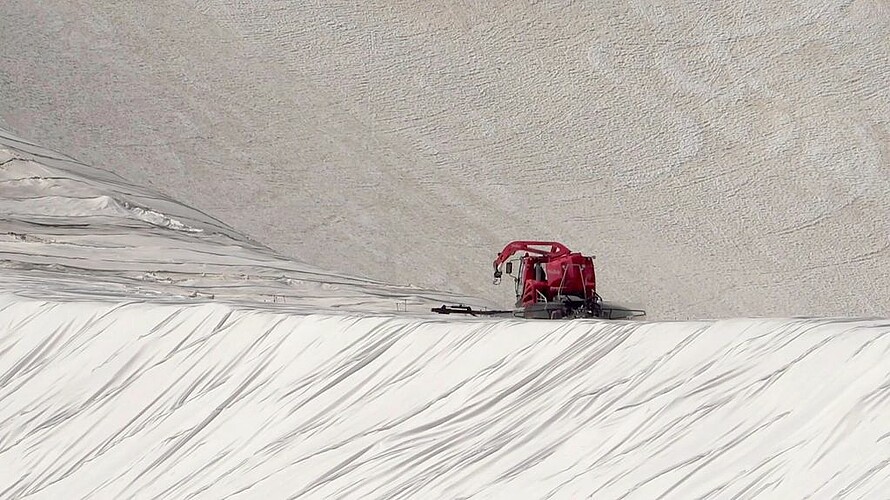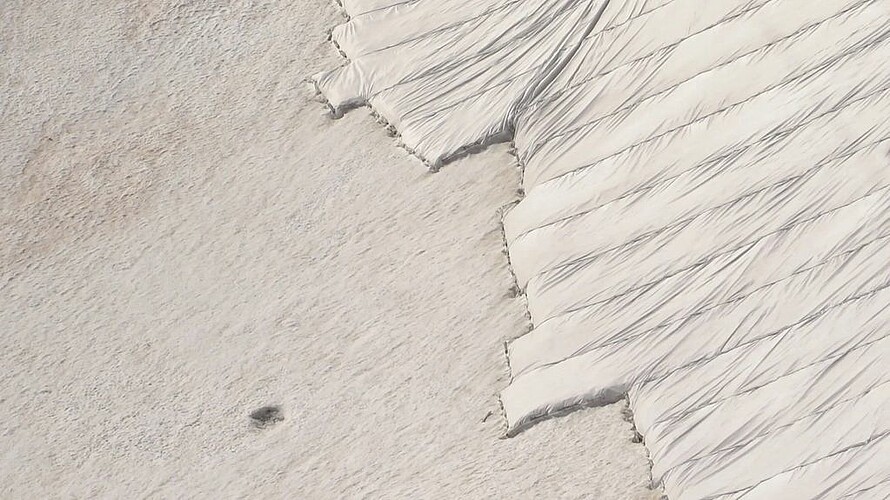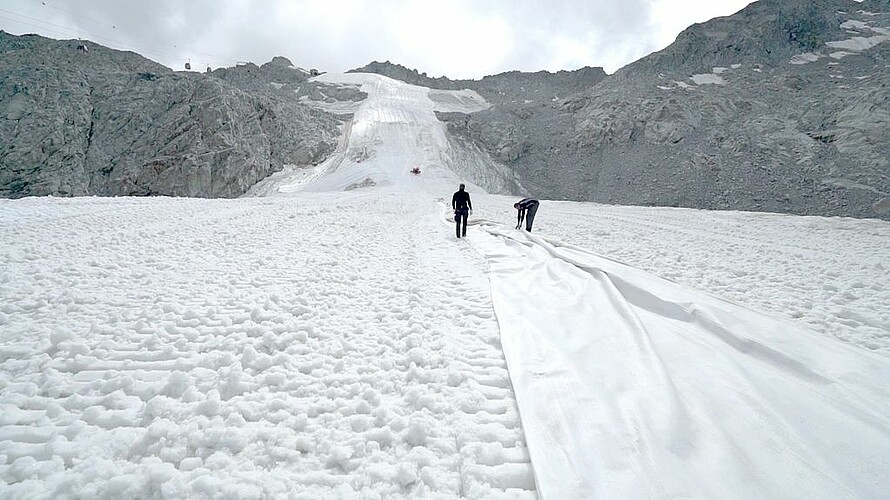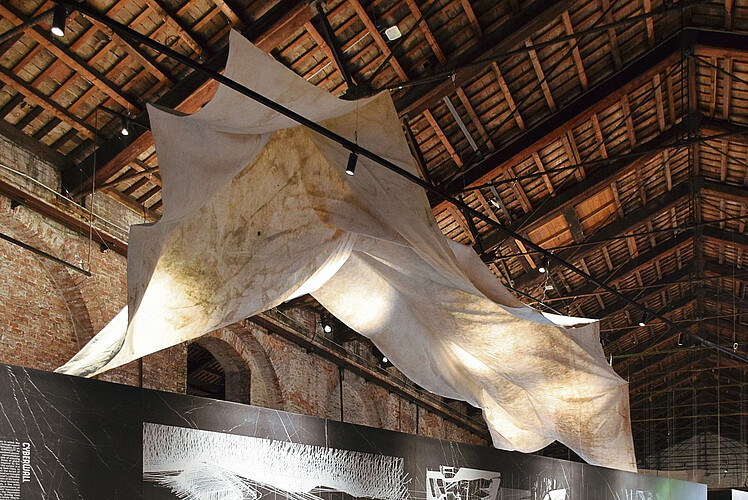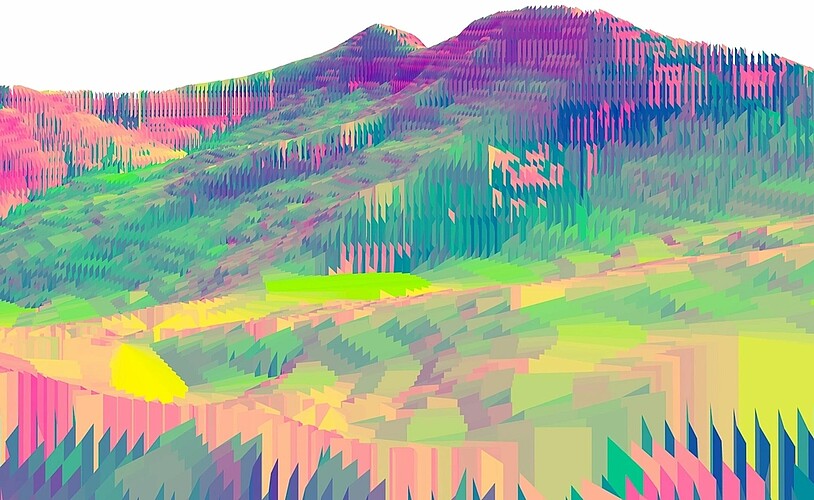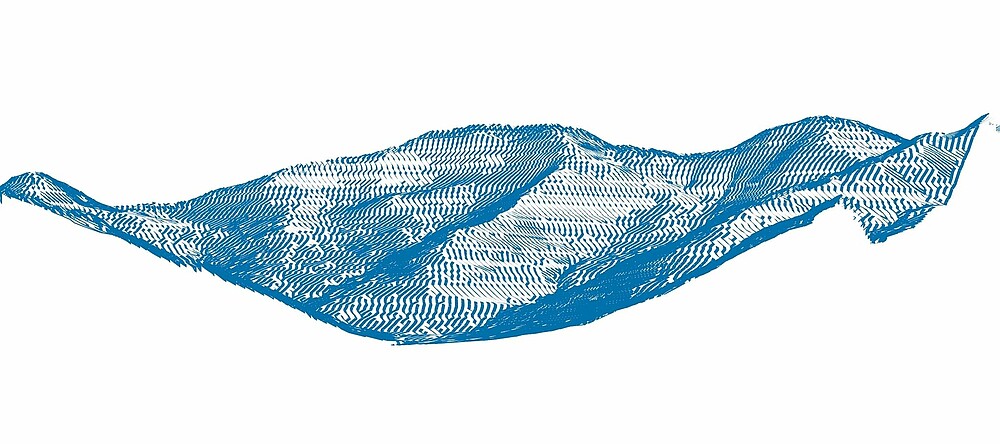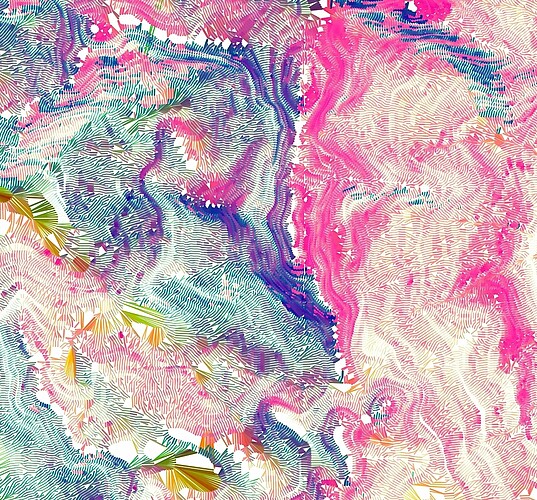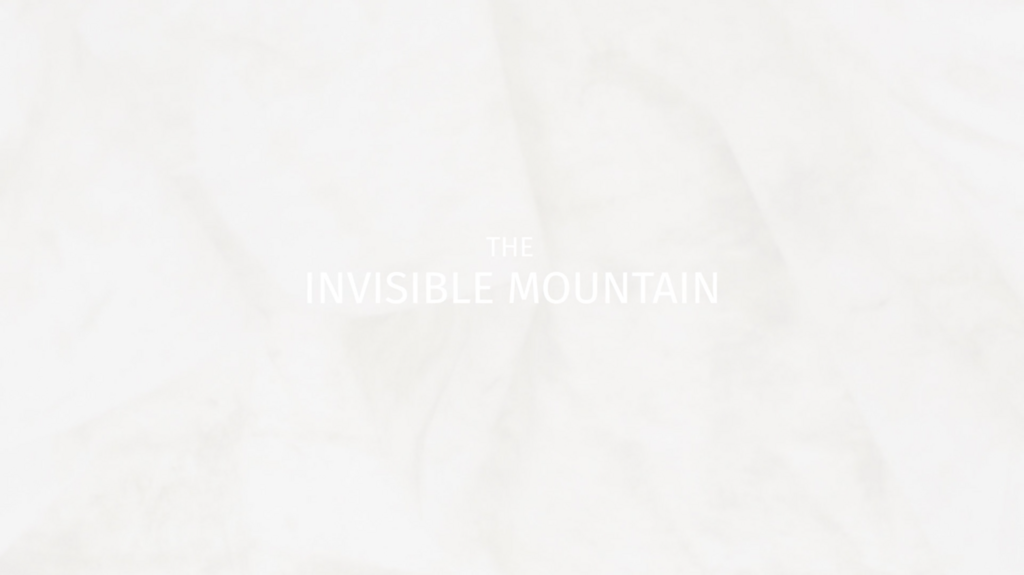The Invisible Mountain
a project by Katharina Fleck and Giovanni Betti
for the 17th Venice Architecture Biennale "How Will We Live Together" curated by Hashim Sarkis. The invisible mountain is part of Comunitá Resilienti, the Italian Pavilion curated by Alessandro Melis, in the section Sud Globale coordinated by Paola Ruotolo.
The Presena Glacier
Every year a new ritual takes place in the Alps between May and June. On the border between Trentino and Lombardy, a group of people confront the scale of an entire mountain in a desperate attempt to save it from the ravages of climate change.
While in other places climate change may still be an abstract concept, here, between 2700 and 3000 metres above sea level, its effects are all too evident. The Presena glacier has lost more than a third of its volume since 1993. This border has already become a frontline. So far, the average yearly temperature in the Alps has already risen by more than 1.5°C, twice the global average. The effort to slow down its melting began in 2008, when they began covering part of the glacier with large tarpaulins to protect the snow from the rising temperatures in the summer months, an experimental act.
Once rolled out, these large white blankets are barely distinguishable from the snow below. The experiment proved effective, decreasing snowmelt by up to 60%. It was repeated the following year, and the year after that. Each year the effort paid off, and the area to be protected has continued to grow. In 2020, more than 100,000 square metres of glacier were covered by this special geotextile to help save the ice. This has helped preserve the glacier, but it is also a paradoxical act. The material that makes up these enormous sheets is a high tenacity polypropylene, stabilised to resist ultraviolet radiation. The same hydrocarbons and petrochemical compounds that are responsible for so much of the global climate change are now being used to slow it down locally.
These tarpaulins have a dramatically short life cycle. Their effectiveness lies in their whiteness. Their albedo allows them to reflect 78% of solar radiation. But this is also where their fragility lies. Atmospheric smog, present even at 3,000 metres above sea level, accumulates on the porous surface of the fabric, reducing its effectiveness over the course of a season. The following year the side that was in contact with the snow will be used to reflect the sun's rays. The year after that, new tarpaulins will be needed. The tarpaulins used are light but strong, at just 340 grams per square metre, they weigh like light watercolour paper.
17th Venice Architecture Biennale
Sometimes objects embody a conflict, a contradiction, an impossibility. This is what happens with these fabrics. By enveloping the mountain, they allow its existence and deny it; they preserve it and erase it. Made of stable long-chain polymers, the microplastics dispersed by these fabrics will persist in the environment even when the Presena glacier has fatally disappeared. At once temporary and permanent, ethereal and protective, the fabric covering the mountain becomes a powerful symbol that can enable critical reflection and spark debate about the complex challenge we face and the double-edged sword tools we have at our disposal to address it.
It is a tragic reminder of how our actions are affecting the planet on a geological scale, how our very idea of 'nature' needs to be reformulated. In the age of the Anthropocene there is no more wilderness, the world has become a planetary garden that we influence and maintain - consciously or unconsciously. When a mountain has to be wrapped in plastic to save millennia-old ecosystems that may now disappear in a few decades, we have further proof, should it ever be needed, that the word 'natural' has lost its meaning. There are only varying degrees of artificiality. There is no more natural environment, only built environment. It is also a mirror of how local solutions, no matter how extensive, have only limited power to slow down global effects; indeed, they may unwittingly contribute to their perpetuation. In this context, the tarpaulins used to protect the mountain become a powerful symbol of the contradictions of our time and the limits of our technology.
A portion of these fabrics (5x15m), draped in the shape of the mountain ridge it preserves flies suspended by invisible threads in the Italian Pavilion at the 17th Architecture Biennale. The Biennale 2021, curated by Hashim Sarkis, poses the question "How will we live together?". Many pavilions and authors have completed the question: "How will we live together with our planet?". This question is more topical than ever and fundamental in imagining any future-oriented activity in these times, including architecture. The "Resilient Communities" of the Italian Pavilion curated by Alessandro Melis are also part of this strand. For the section curated by Paola Ruotolo, we had the opportunity to tell this story with our installation "La Montagna Invisibile" (The Invisible Mountain). Suspended above their heads, visitors can walk under this temporary canopy and, in doing so, they will experience the emptiness it describes, a physical reminder of the disappearance of the environment it seeks to protect.
At the same time, the fabric recovered after spending two seasons protecting the glacier can be read like a shroud. The image of this being so profoundly different from us - the Presena Glacier - becomes manifest. The traces of melting snow are, in this context, comparable to the Imago Christi of the Shroud of Turin. A shroud that bears the trace and memory of the disappearance from this world of the physical form of an entity beyond our comprehension. The fragile balance of the territory thus represented is also revealed in the construction of the structure of the installation, which becomes a strange case of a tensile structure, held in place by thin nylon threads that distribute the forces towards the ceiling of the Tesa delle Vergini but also through the fabric of the installation itself.
Abstract Presena
When a mountainous landscape, a topography, is no longer defined by its permanence but by its opposite, by its propensity, literally, to melt before our eyes, what is the appropriate representation of this landscape? The static and unchanging nature of mountain ranges is described in our geographical atlases up to our design drawings by means of contour lines. Horizontal sections of the terrain, these iso-altimetric curves identify and extract stable planes along which potential energy is constant and deny movement and transformation.
If the landscape is suddenly liquid, another representation model is needed to identify the new qualities of the changing territory. No longer the contour line, but the maximum slope line is the right representation for these dynamic territories in strong change. The maximum slope line between two iso-altimetric curves is the trajectory that the melting snows will naturally want to follow on their descent into the valley. Naturally structured into networks that branch, bifurcate and converge, they are the dynamic and iridescent representation of a territory in constant and profound transformation, with iridescent and changing properties.
